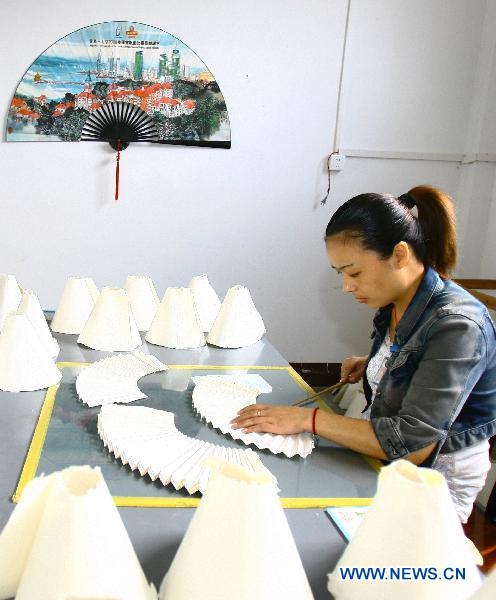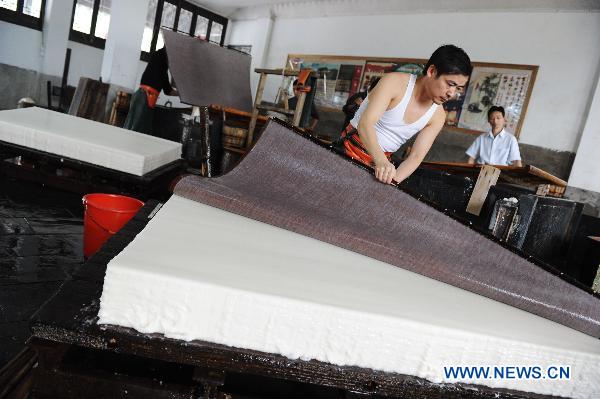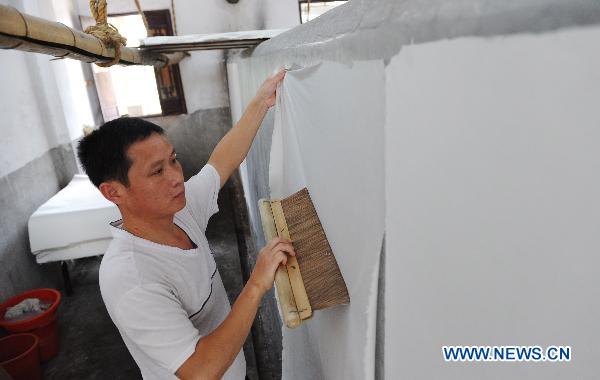|

A worker makes fans with rice paper (Xuan paper) at the Xuan paper cultural park in Jingxian county, east China's Anhui province, Oct. 10, 2010. (Xinhua/Hou Dongtao)
Xuan paper, a type of handmade paper, was originally produced during ancient China's Tang Dynasty (618-907) in Jingxian county and its neighboring cities as Xuancheng. The county was under the control of Xuanzhou prefecture in the Tang Dynasty, and the Xuan paper was named after Xuanzhou.
Xuan paper is white, soft and smooth. Thanks to its fine texture, Xuan paper is hard to be creased and corroded. It has been widely used for Chinese calligraphy and painting for many years.
The procedure of making Xuan paper consists of over 100 steps, which was listed as a world intangible cultural heritage by the UNESCO in 2009.
However, with the impact of modern production and lifestyle, the inheritance of the handmade Xuan paper craft in Jingxian faces challenges, such as shrinking markets, little output as well as lack of inheritors.
To tackle these problems, on the one hand, Jingxian county has raised the purchasing prices of bark of Pteroceltis tatarinowii, a main raw material of Xuan paper, to encourage local farmers to grow the plant; on the other hand, a special class on making Xuan paper was established in a local vocational high school to train inheritors.
By far, Xuan paper in Jingxian has developed into an industry chain including raw material planting, production, sales, and tourism, which involves tens of thousands of local workers.
Meanwhile, many Xuan paper-related products including colored Xuan paper and collection items were developed and put to markets. These products have won great popularity among consumers not only in China, but also in South Korea, Japan, and southeast Asian countries.
More photos:

Workers show procedures of making rice paper (Xuan paper) to visitors at the Xuan paper cultural park in Jingxian county, east China's Anhui province, Oct. 10, 2010. (Xinhua/Li Jian)

A worker dries the rice paper (Xuan paper) on a hot wall at the Xuan paper cultural park in Jingxian county, east China's Anhui province, Oct. 10, 2010. (Xinhua/Li Jian)
|